 Today’s blog post comes from Frank Miller, a civil engineer. In honor of National Ride Your Bike to Work Day, he shares his story. Since choosing to ride his bike 11 years ago, Frank has ridden over 50,000 miles.
Today’s blog post comes from Frank Miller, a civil engineer. In honor of National Ride Your Bike to Work Day, he shares his story. Since choosing to ride his bike 11 years ago, Frank has ridden over 50,000 miles.
National Bike Month and Bike to Work Week give us an opportunity to examine our commuting habits, question the automobile lifestyle and make positive changes to benefit our health and the environment.
Real and permanent change begins at the “grassroots” level. We should ask ourselves, must I submit to the automobile lifestyle? Are there alternatives to automobile commuting that are more healthy, enjoyable and sustainable?
Unfortunately, we in the United States have built a society and culture heavily dependent on the automobile. So pursuing alternatives to the automobile are difficult with the “deck stacked” so much in favor of the automobile lifestyle. There are a few communities, however, that have made a commitment to cycling, and transit alternatives in general. These  communities are examples that change is possible.
communities are examples that change is possible.
We should take this time to consider the harm that the automobile has done to our health and our environment. I contend that automobile commuting is as harmful to our bodies as smoking. Then there is the economic toil on people, the depletion of natural resources, and the pollution of air and water.
Cycling offers an alternative to the automobile lifestyle and the benefits are enormous. It is good for our bodies. It is economical and it is sustainable.
 I have been an avid bike commuter for the past 11 years, and before that, an avid rider of mass transit. In the summer of 2001, I was looking for an exercise to replace running. A coworker (who was an avid cyclist) suggested that I consider cycling to work. He reasoned I could “kill two birds with one stone” – cycle to work for the exercise and avoid the bus ride too. I tried it and I have been a bike commuter ever since.
I have been an avid bike commuter for the past 11 years, and before that, an avid rider of mass transit. In the summer of 2001, I was looking for an exercise to replace running. A coworker (who was an avid cyclist) suggested that I consider cycling to work. He reasoned I could “kill two birds with one stone” – cycle to work for the exercise and avoid the bus ride too. I tried it and I have been a bike commuter ever since.
Commuting by bicycle was not easy at first. It took nearly a month for me to become conditioned to it, even though I was in good running shape. I stayed at it and worked it into my daily routine. Now after 11 years, I wouldn’t think of commuting any other way.
There are many people now days opting for an alternative to the automobile and who are choosing cycling for their  commuting. These people and the communities promoting cycling and alternative transit are the examples showing us that it is possible to change our habits; change that is good for ourselves and our planet.
commuting. These people and the communities promoting cycling and alternative transit are the examples showing us that it is possible to change our habits; change that is good for ourselves and our planet.
Bike to Work Day is an annual event held across the county to raise awareness to the benefits of clean commuting. To find out how to get started check out the League of American Bicyclists.

 Our friends at HandsOn Mid-Willamette Valley shared this great project idea with us, and we wanted to share it with you! It’s a great idea for a rainy-day activity with the family, for adding a small service project to a birthday party, or an office project to do during lunch!
Our friends at HandsOn Mid-Willamette Valley shared this great project idea with us, and we wanted to share it with you! It’s a great idea for a rainy-day activity with the family, for adding a small service project to a birthday party, or an office project to do during lunch!



 2. Assign each participant a letter or group of letters and give them the freedom to decorate it however they choose. Remind volunteers that the word and picture needs to be a good fit for a 3-5 year old child. Also, spelling is important so you may choose to have a dictionary handy.
2. Assign each participant a letter or group of letters and give them the freedom to decorate it however they choose. Remind volunteers that the word and picture needs to be a good fit for a 3-5 year old child. Also, spelling is important so you may choose to have a dictionary handy.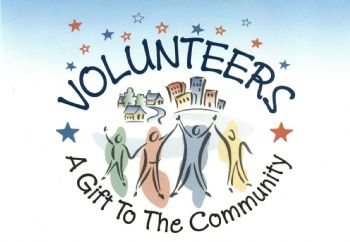 An effective recognition program with the right mix of formal and informal recognition systems and that truly functions as an integral component of a volunteer program can honor and motivate volunteers for their contributions. (Formal volunteer recognition includes certificates, plaques, pins, or dinners to honor volunteer achievement. Informal recognition occurs in the daily interchange between volunteers and the organization when its staff conveys appreciation for the volunteers’ work.)
An effective recognition program with the right mix of formal and informal recognition systems and that truly functions as an integral component of a volunteer program can honor and motivate volunteers for their contributions. (Formal volunteer recognition includes certificates, plaques, pins, or dinners to honor volunteer achievement. Informal recognition occurs in the daily interchange between volunteers and the organization when its staff conveys appreciation for the volunteers’ work.)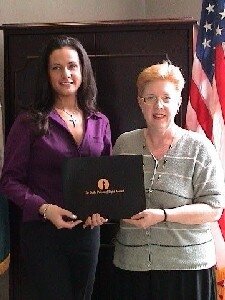
 1 in 4 Americans-nearly 60 million people-live with common and treatable mental health disorders. Check out these 5 easy ways you can volunteer during mental health month.
1 in 4 Americans-nearly 60 million people-live with common and treatable mental health disorders. Check out these 5 easy ways you can volunteer during mental health month. Fight the Stigma: Become A StigmaBuster!
Fight the Stigma: Become A StigmaBuster!  At
At  the money should go, and designate supporting roles.
the money should go, and designate supporting roles.
 our national life.”- President Barack Obama
our national life.”- President Barack Obama opportunities should be developed with this idea in mind. Whether your program is designed for neighborhood, community, or world activism, it is important to provide them a sense of fulfillment through service. Make sure that your organization’s mission is clear, so that baby boomers know they are volunteering for a specific cause. Allow older volunteers to form relationships through volunteering, it will make them feel more connected to the project.
opportunities should be developed with this idea in mind. Whether your program is designed for neighborhood, community, or world activism, it is important to provide them a sense of fulfillment through service. Make sure that your organization’s mission is clear, so that baby boomers know they are volunteering for a specific cause. Allow older volunteers to form relationships through volunteering, it will make them feel more connected to the project.
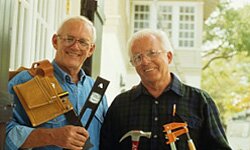
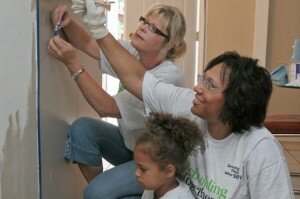 Without volunteers, most non-profit organizations would cease to exist or suffer a drastic reduction in capacity to serve communities and achieve the organization’s mission. Therefore, a refresher course in basic volunteer management is always in order! The way you plan your service projects will significantly affect the success of your volunteer recruitment. The best way to increase your volunteer base is to retain current volunteers; retention is simply a matter of making volunteers feel good about themselves and their service. Class is now convened! Read on for a few key volunteer management reminders.
Without volunteers, most non-profit organizations would cease to exist or suffer a drastic reduction in capacity to serve communities and achieve the organization’s mission. Therefore, a refresher course in basic volunteer management is always in order! The way you plan your service projects will significantly affect the success of your volunteer recruitment. The best way to increase your volunteer base is to retain current volunteers; retention is simply a matter of making volunteers feel good about themselves and their service. Class is now convened! Read on for a few key volunteer management reminders. Summer is just around the corner and students are ready to escape from the tedium of school. Summer vacation is a great time for kids to take a break from homework and grades, but it’s an even better time to engage in a different kind of learning – service learning! Volunteering has countless benefits for kids and teens. It helps develop important skills, including critical thinking, organizing, and collaboration and increases self-confidence. Teens learn to critically think about the world around them through hands-on work that benefits others. Volunteer jobs can even lead to future careers!
Summer is just around the corner and students are ready to escape from the tedium of school. Summer vacation is a great time for kids to take a break from homework and grades, but it’s an even better time to engage in a different kind of learning – service learning! Volunteering has countless benefits for kids and teens. It helps develop important skills, including critical thinking, organizing, and collaboration and increases self-confidence. Teens learn to critically think about the world around them through hands-on work that benefits others. Volunteer jobs can even lead to future careers!
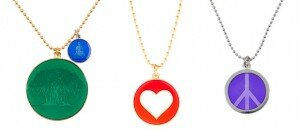 Give your mom gifts that give back! Whether it’s a necklace, bracelet, or pretty pair of earrings, 20 percent of the proceeds from
Give your mom gifts that give back! Whether it’s a necklace, bracelet, or pretty pair of earrings, 20 percent of the proceeds from 
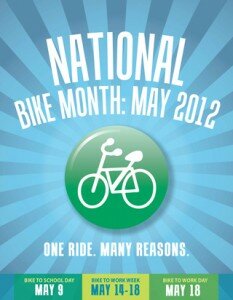 Do you choose to ride a bike instead of commuting in a car? If your answer is “yes,” this month is for you. May is
Do you choose to ride a bike instead of commuting in a car? If your answer is “yes,” this month is for you. May is 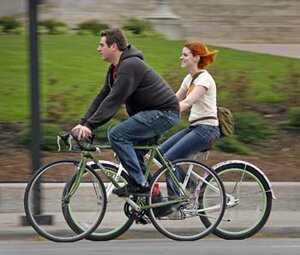
 as T-shirts, gift certificates, water bottles, etc.
as T-shirts, gift certificates, water bottles, etc.
 g has many benefits for the community. It is an easy way to volunteer to improve the environment and your community’s overall health.
g has many benefits for the community. It is an easy way to volunteer to improve the environment and your community’s overall health.
